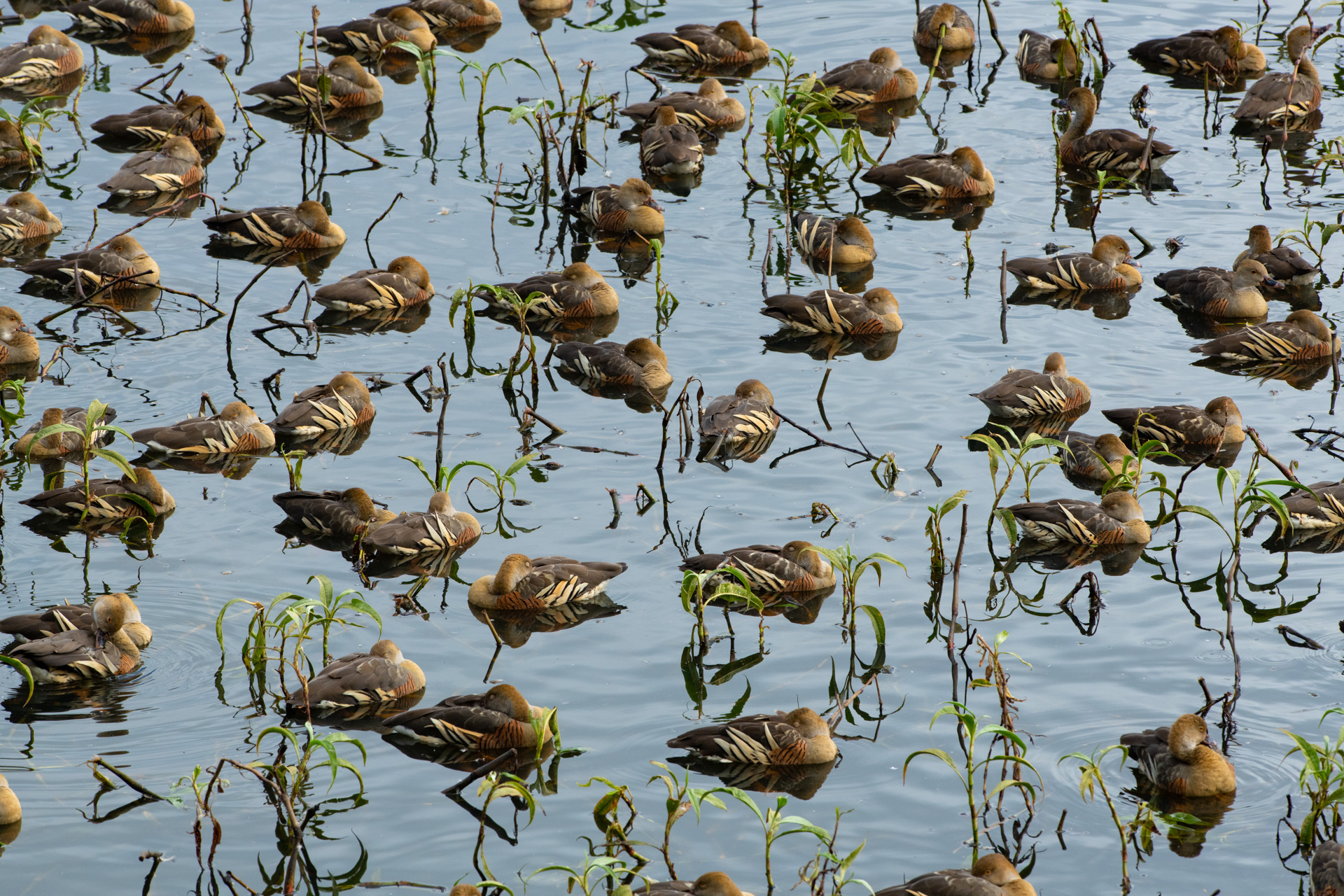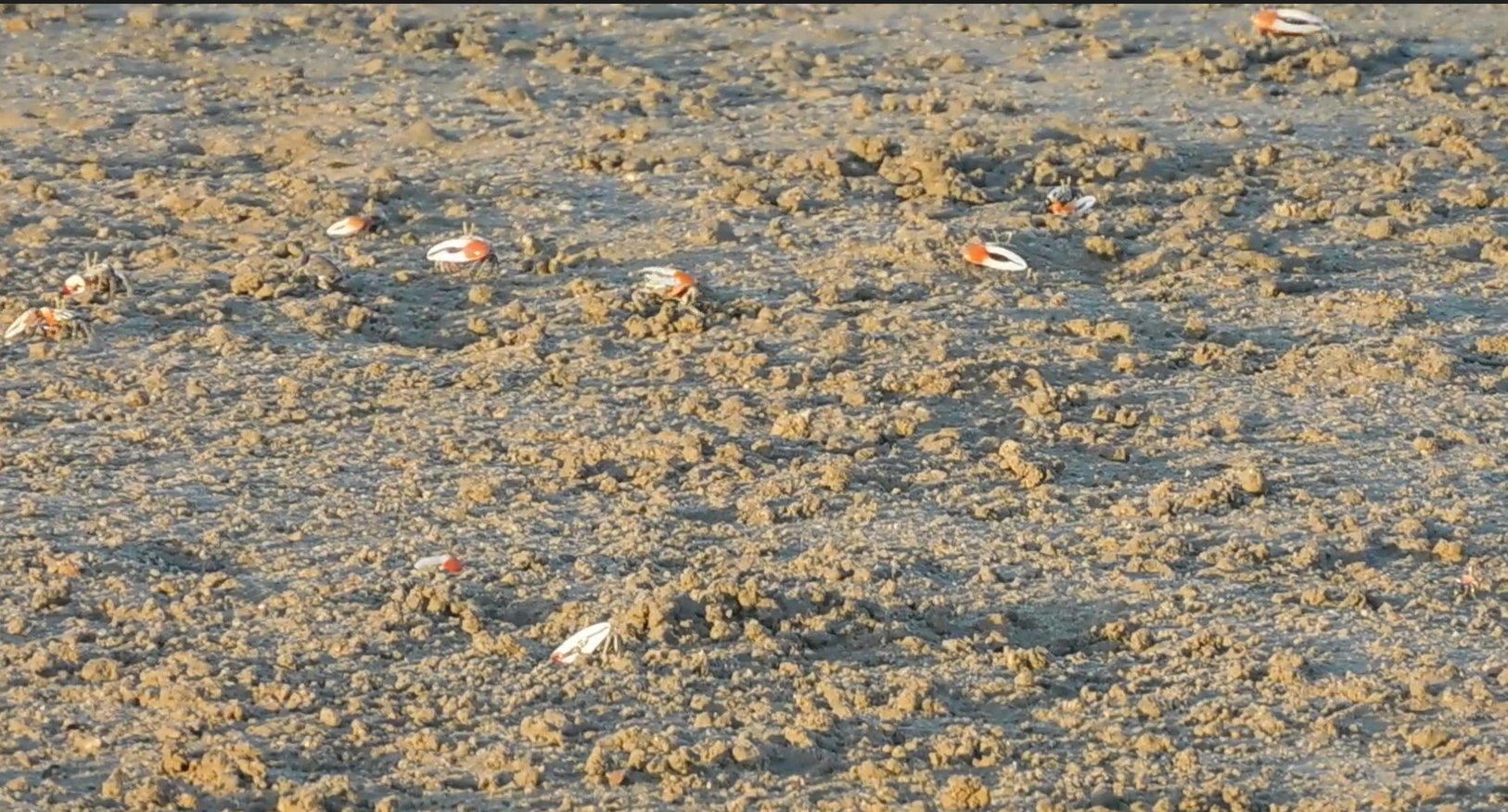|
|
Aggregation (biota)Aggregated distribution of biota describes when individuals are closer together than they would be if they were randomly or evenly distributed[2]. Aggregations of species or functional groups can occur when individuals are attracted to a favourable environment, or each other[2]. Aggregation at the individual cell level, such as bacterial aggregation and patchiness, play an important role in a variety of ecological processes including competition, adaptation and epidemics[7]. Quick facts
For waterbirds, aggregations are often linked to the processes of movement, feeding and breeding. Sometimes, it can be a strategy to avoid predation e.g. safety-in-numbers. The Australian Pelican and Little Black Cormorant Phalacrocorax frequently feed in flocks, which can have advantages in catching fish. Breeding in colonies is a normal strategy for many waterbird species. Some large waterbirds such as pelicans, cormorants and ibises often fly in skein or ‘V formation’, which offers aerodynamic benefits. In benthic ecology for both freshwater and intertidal and subtidal (estuarine and marine) ecosystems, patchiness may reflect the underlying presence of ecological resources, habitat disturbance cycles or larval settlement patterns. For others, social behaviour at different life stages or predator avoidance underpins the need to co-locate with similar taxa. The following examples illustrate patchiness of occurrence that is typical for many aquatic organisms. In stream ecology, the distribution of species is non-random and typically reflects the non-random distribution of habitat, food and shelter in streams. For example, the patchy distributions of Sclerocyphon beetle larvae or Tasimia caddisfly larvae, reflect the patchy distribution of their cobble and bounder habitats and the algae that grows on them. The distributions of insects that live in water, such as Simuliid fly larvae and Hydropshchid caddisfly larvae are patchy about locations in riffles where flow velocity is within the narrow range suitable for their filter feeding behaviours, whereas Gripopterygid stoneflies are confined to riffle locations with sufficient dissolved oxygen saturation to meet their respiratory requirements. Small-bodied stream fish can have patchy distributions limited to aquatic vegetation that provide them both shelter from predators and an ample source of food. Intertidal and subtidal (estuarine and marine) patchiness in benthos relate to abiotic attributes of benthic substrates (e.g. consolidation, sediment grain size, substrate composition, light / evaporation etc.). Patchiness due to benthic productivity pulses affects the distribution and productivity of microphytobenthos or meiofauna in the substrate. Some molluscs form aggregations in unconsolidated substrates for example the stromb shell Conomurex luhuanus, or the eugari (pipi or wong) Donax deltoides mollusc whose sandy beach aggregations correlate with those of feeding oystercatchers following their prey[6][3]. Social animals form aggregations for a variety of reasons. Fish, prawns and crayfish shoal or school for feeding and breeding, to minimise energy expenditure and to avoid predation. Schooling behaviour can be triggered by a ‘critical density’ of fish or by an environmental threshold. Feeding aggregations minimize an individual’s exposure to predators while accessing resources, for example soldier crabs and fiddler crabs aggregate to graze on the detritus. Reproductive activity is the reason groups of male fiddler crab ‘lek’ to wave to attract females to their burrow or territory. Fish spawning aggregations include the winter ‘mullet run’ when spawning fish migrate from the open ocean to estuaries and the northward migration of tailor fishery. Conversely, some territorial taxa space evenly to partition benthic food resources by building mud walls or mounds (e.g. mudskippers, fiddler crabs). These few examples illustrate patchiness of occurrence that is typical for many aquatic organisms[4][1][5]. LinksAggregation - Department of Environment, Science and Innovation References
Last updated: 30 August 2023 This page should be cited as: Department of Environment, Science and Innovation, Queensland (2023) Aggregation (biota), WetlandInfo website, accessed 25 June 2024. Available at: https://wetlandinfo.des.qld.gov.au/wetlands/ecology/processes-systems/aggregation/ |

 — Department of Environment, Science and Innovation
— Department of Environment, Science and Innovation



